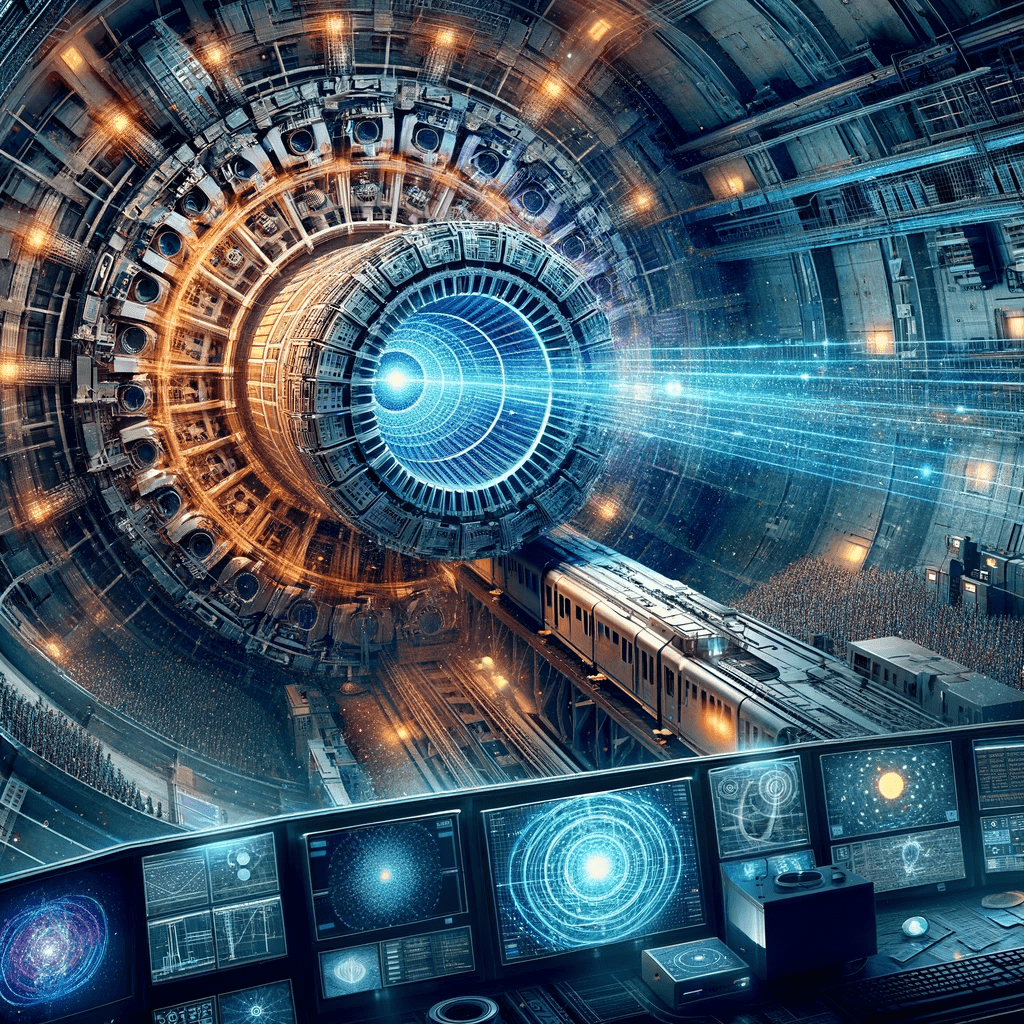European Organization for Nuclear Research (CERN)

The European Organization for Nuclear Research, known as CERN, is the world’s largest and most prestigious particle physics laboratory. Founded in 1954, it is located near Geneva, Switzerland, and straddles the Swiss-French border. CERN’s primary mission is to uncover the fundamental building blocks of the universe by conducting high-energy particle physics research. The organization brings together scientists and engineers from across the globe to collaborate on cutting-edge experiments, enabling them to advance our understanding of the universe’s most basic particles and the forces that govern their interactions.
One of the most significant achievements at CERN was the development of the Proton Synchrotron (PS) in 1959. This particle accelerator was the first major project at the facility and served as a foundation for future experiments. The PS has been used for various purposes, including the study of particle collisions, antiproton production, and neutrino beams. Its versatile nature has made it an essential part of CERN’s research infrastructure for over six decades.
In 1971, CERN introduced the Intersecting Storage Rings (ISR), the first proton-proton collider in the world. The ISR allowed scientists to study particle interactions at higher energies than ever before, leading to significant advancements in our understanding of the fundamental forces of nature. The ISR operated until 1984, paving the way for the development of more advanced colliders at CERN.
One such successor is the Super Proton Synchrotron (SPS), which began operation in 1976. The SPS was initially designed as a proton-proton collider but later transitioned to a proton-antiproton collider. It was instrumental in the discovery of the W and Z bosons in 1983, particles responsible for the weak nuclear force. These discoveries led to the 1984 Nobel Prize in Physics for Carlo Rubbia and Simon van der Meer.
The Large Electron-Positron Collider (LEP) began operation in 1989 and was the largest electron-positron collider ever built. It conducted crucial experiments that contributed to the development of the Standard Model of particle physics. LEP was in operation until 2000, when it was dismantled to make way for the construction of the Large Hadron Collider (LHC).
The LHC is the world’s largest and most powerful particle accelerator, with a 27-kilometer circumference. It began operations in 2008 and has since been the site of numerous groundbreaking discoveries, including the Higgs boson’s observation in 2012. The discovery of the Higgs boson, a particle responsible for giving other particles mass, was a significant milestone in particle physics. The achievement earned François Englert and Peter Higgs the 2013 Nobel Prize in Physics.
CERN is the birthplace of the World Wide Web. Tim Berners-Lee, a British computer scientist working at CERN, invented the World Wide Web in 1989 as a way to facilitate communication among scientists (Source: CERN).
CERN operates the largest and most complex scientific instruments on the planet. For example, the ATLAS detector, one of the LHC’s major experiments, is about half the size of the Notre Dame Cathedral and weighs approximately 7,000 tonnes (Source: CERN).
CERN is home to the Antiproton Decelerator (AD), which slows down antiprotons to study antimatter properties. The AD is the only facility of its kind in the world (Source: CERN).
Experts in the field of particle physics, such as Professor Brian Cox and Dr. Fabiola Gianotti (CERN’s Director-General), have praised the scientific advancements made at CERN. They emphasize that these discoveries not only contribute to our understanding of the universe but also have practical applications in fields such as medicine, materials science, and computing.
Books that discuss CERN’s work and its impact on the scientific community include “The Large Hadron Collider: The Extraordinary Story of the Higgs Boson and Other Things That Will Blow Your Mind” by Don Lincoln and “The Higgs Discovery: The Power of Empty Space” by Lisa Randall. These books detail the significance of discoveries made at CERN, like the Higgs boson, and their implications for our understanding of the fundamental laws of nature.
The European Organization for Nuclear Research (CERN) has been at the forefront of particle physics research for over six decades. Its numerous projects, such as the Proton Synchrotron, the Intersecting Storage Rings, and the Large Hadron Collider, have led to groundbreaking discoveries, including the W and Z bosons and the Higgs boson.


